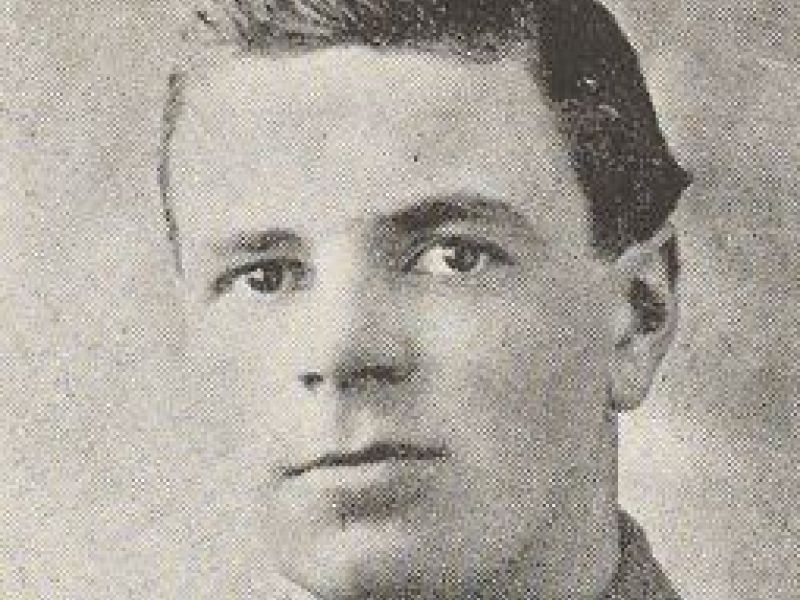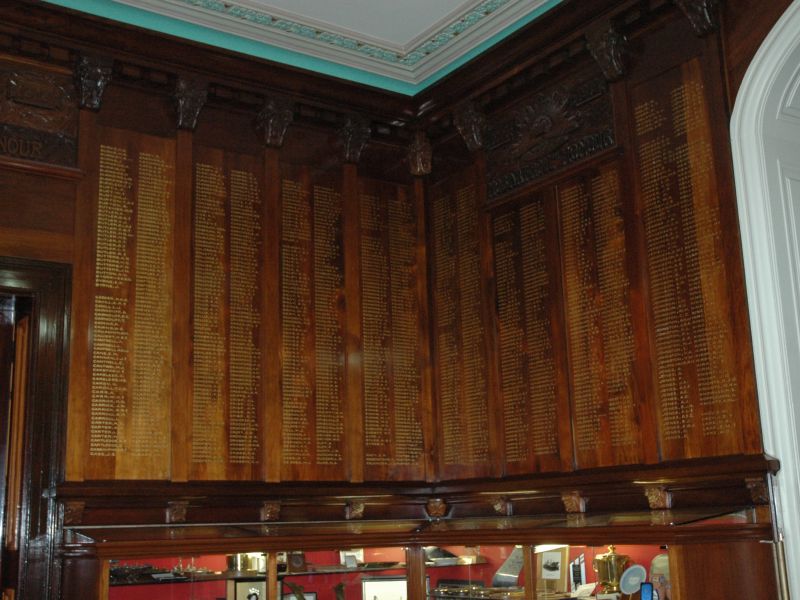Gunner Albert Reginald Escott, 6th Field Artillery Brigade, AIF
Albert Escott, known as “Reg”, was born on 21 February 1896 to Walter and Sarah Escott of Hobart. Reg’s father was born in England, and had had a colourful career as a law clerk and parliamentary reporter, spending extended periods of time in America and South Africa before he moved to Australia. Walter would hold the position of senior clerk in the Home Affairs Department in Hobart for 20 years. Reg was educated at the school at Battery Point, and went on to work as a clerk for Messrs Darling and Reynolds of Hobart.
Reg Escott enlisted in the Australian Imperial Force in August 1915. Like his older brother Leslie, Reg went into the artillery, although they would not serve together. Reg trained in Australia before leaving for active service overseas with the 6th Field Artillery Brigade in November 1915.
Driver Reg Escott arrived in Egypt on 21 December 1915, and would almost certainly have seen soldiers from Gallipoli disembarking on the docks as he arrived. He joined them in the desert in an extended period of training and reorganisation, as the AIF greatly expanded its numbers. In March 1916, Escott’s field artillery brigade was sent to France, where it was soon put into action in a quiet sector of the front, gaining valuable trench warfare experience.
The 6th Field Artillery Brigade served at Pozieres, firing tonnes of shells at the enemy in long, exhausting barrages. Later that year they would also support infantry attacks at Flers, and continue providing the ongoing desultory fire that characterised the winter of 1916 to 1917. The following year, the 6th Field Artillery Brigade would support attacks on the Hindenburg Line and its outpost villages near Bullecourt.
Throughout this time Driver Escott remained with the brigade without sickness, punishment or decoration being recorded on his service record. In June 1917 he requested to be remustered as a gunner, changing his duties in the brigade from driving the horses pulling the guns and ammunition limbers – to working on the guns themselves. Around the same time he was wounded, although it was noted that he remained on duty.
In early 1918 the Germans conducted their first major offensive on the Western Front since Verdun in 1916. They fired more than 3.5 million shells in the first five hours before launching an infantry attack that would push the allied line to breaking point. Reg wrote to a friend: “We were loading our guns and horses at a station some distance from the firing line when the great bombardment started. We were lucky, as we had pulled our guns out of action two days before the attack.” By the time he wrote his letter, however, the tide had turned – as the Germans outran their supply lines and the desperate allied defence began to gain traction. Reg added, “Now we are down south, but beyond heavy artillery action we have not had any more infantry attacks by the enemy. Last night [in an attack at Morlancourt] we advanced our line about 800 yards, capturing 200 prisoners and a number of machine guns, some of which were captured from us last month.”
By early August the British forces were ready to launch their major offensive in return. On 8 August, the Australian and Canadian corps spearheaded an operation that was four corps wide. It pushed the newly established German line back miles. The battle of Amiens was the first step in 1918’s continuing advance of the Hundred Days that ultimately led to the end of the war.
The 6th Field Artillery Brigade served in a defensive capacity, advancing behind the 2nd Australian Division and setting up near Bayonvillers as the main operation moved away. Although the brigade’s war diary reported that the work “was not very difficult on our front”, and that their losses were “slight”, some batteries did come under German artillery fire. At some point after arriving near Bayonvillers, an artillery shell landed near the 17th Battery of the 6th Field Artillery Brigade, killing Gunner Reg Escott and wounding at least one other man. Reg’s mate and corporal, Thomas Gould, was the first to reach him after the shell exploded, but Reg had already died before he got there.
Reg’s brother Leslie was serving with the 5th Field Artillery Brigade not far away. After hearing of his brother’s death, he was able to visit the site of the shell blast, and his brother’s lonely grave in the middle of the field. After the war, Reg Ascott was reinterred in the Heath Cemetery at Harbonnieres, where he lies today under the words, “in memory of the dearly loved son of Mr & Mrs Escott of Hobart.” He was 22 years old.
- AWM Honour Roll https://www.awm.gov.au/collection/R1722879

 Australian War Memorial
Australian War Memorial